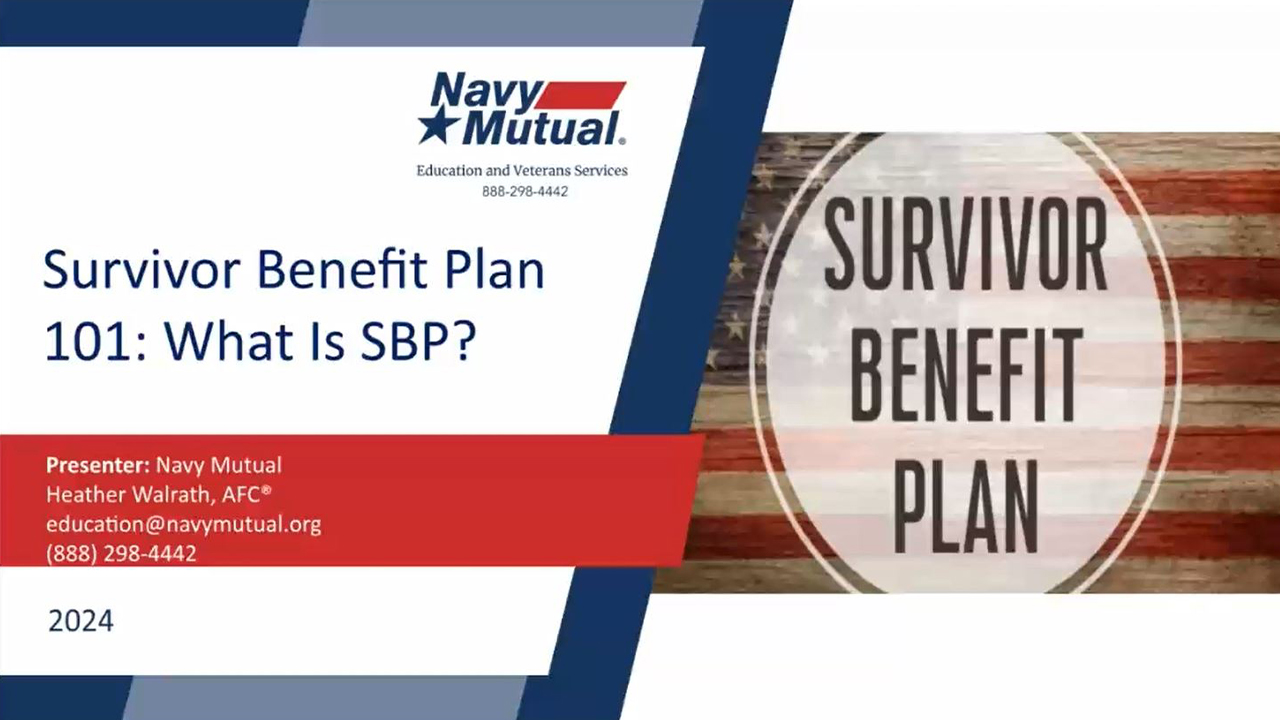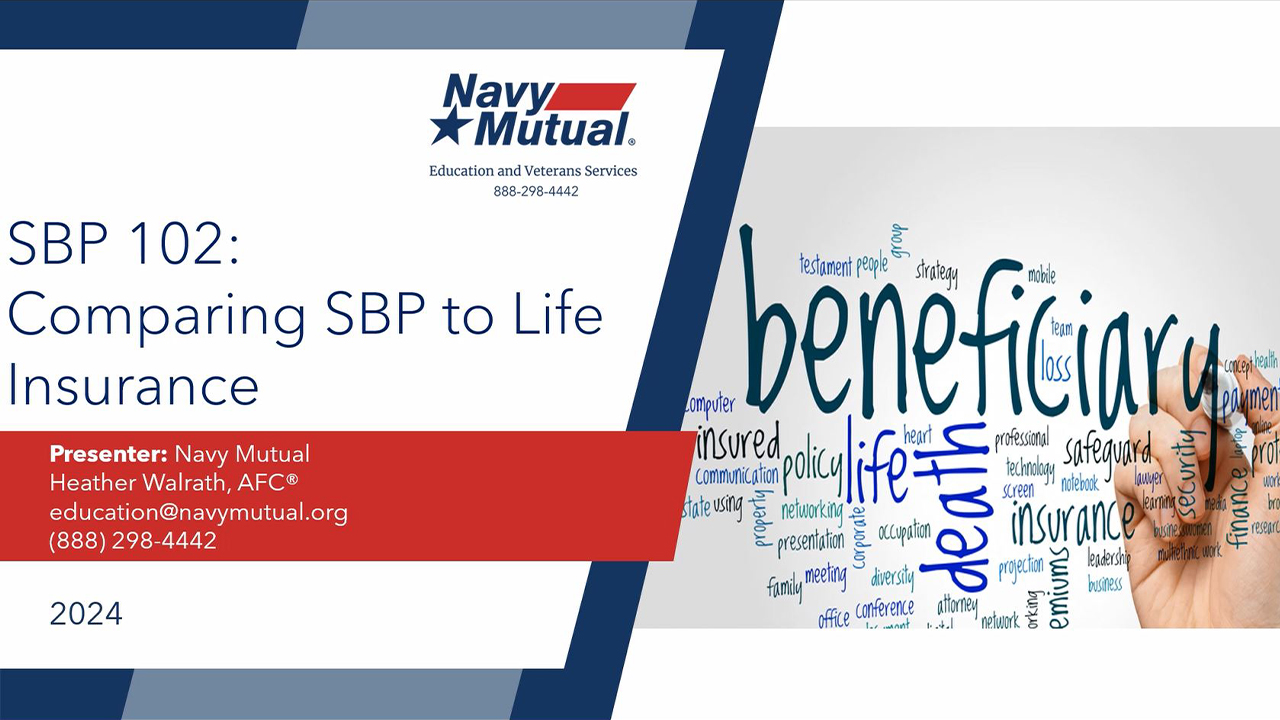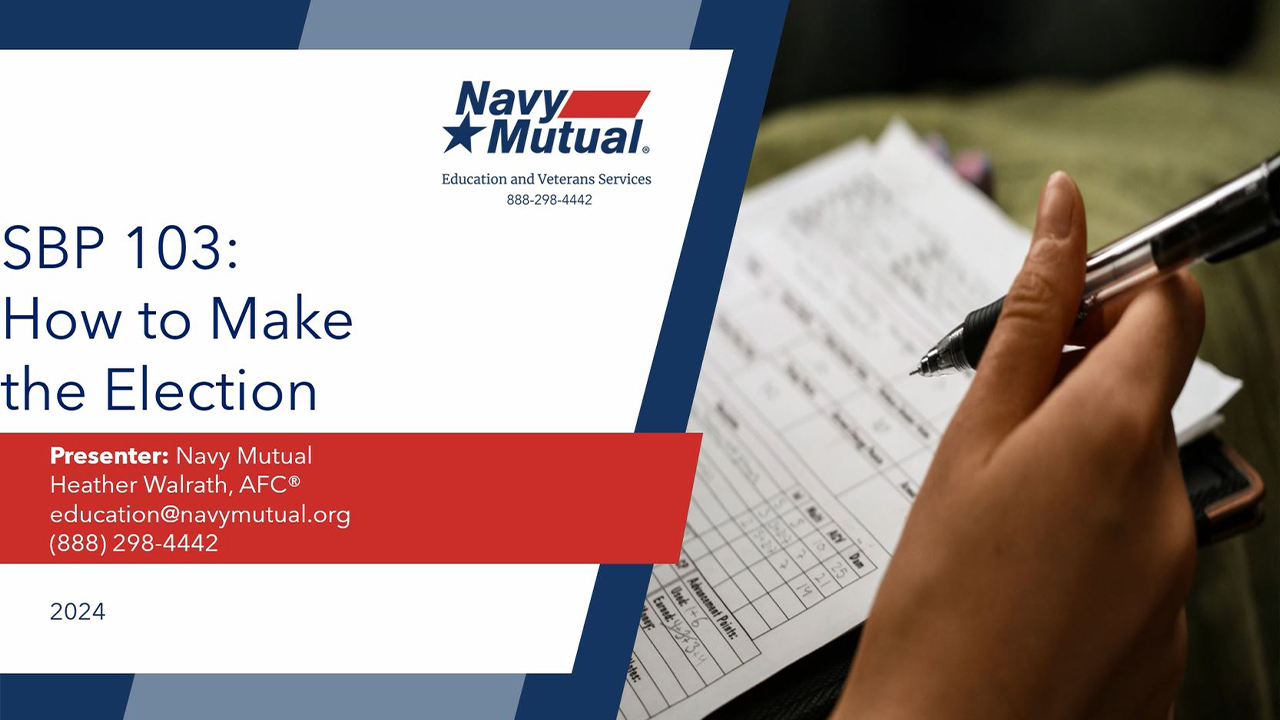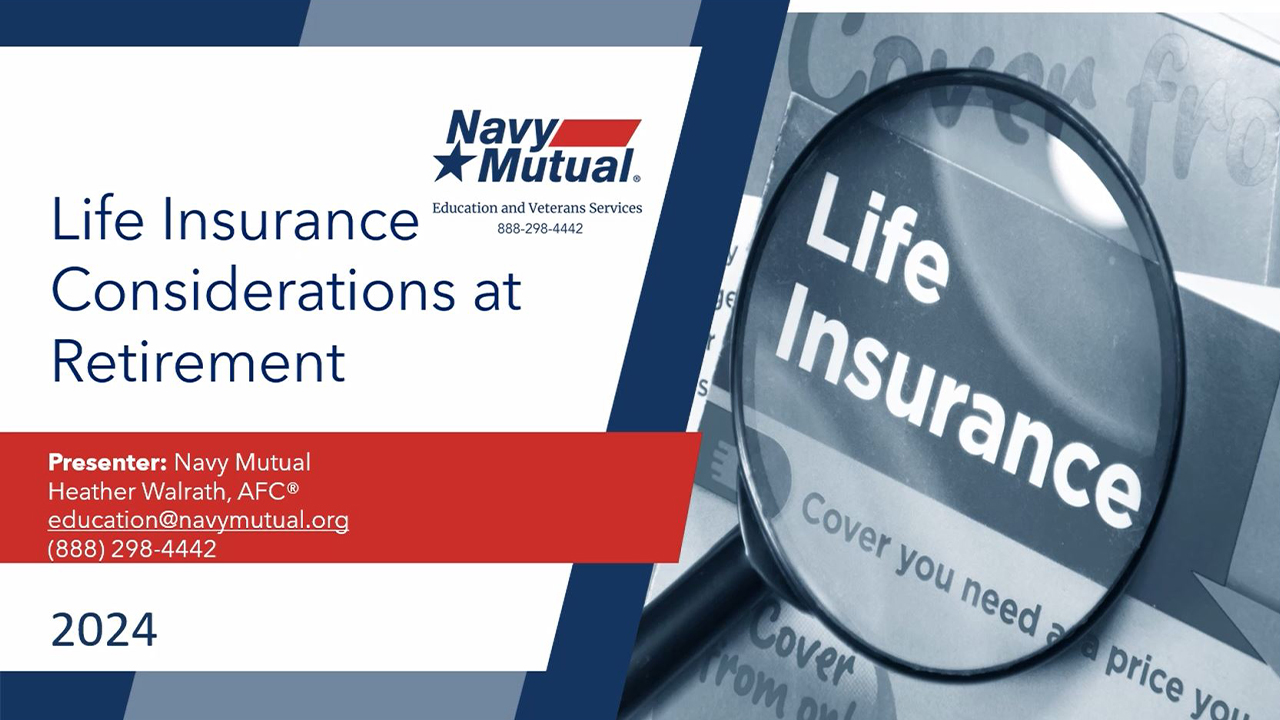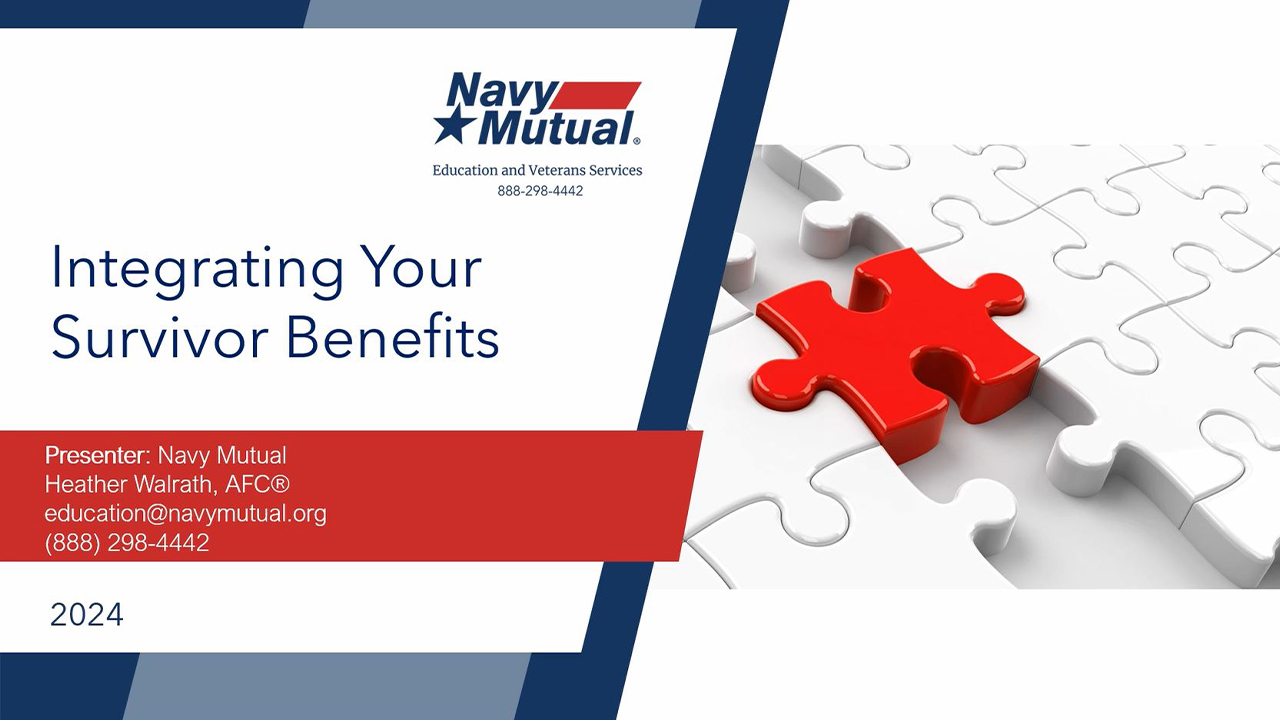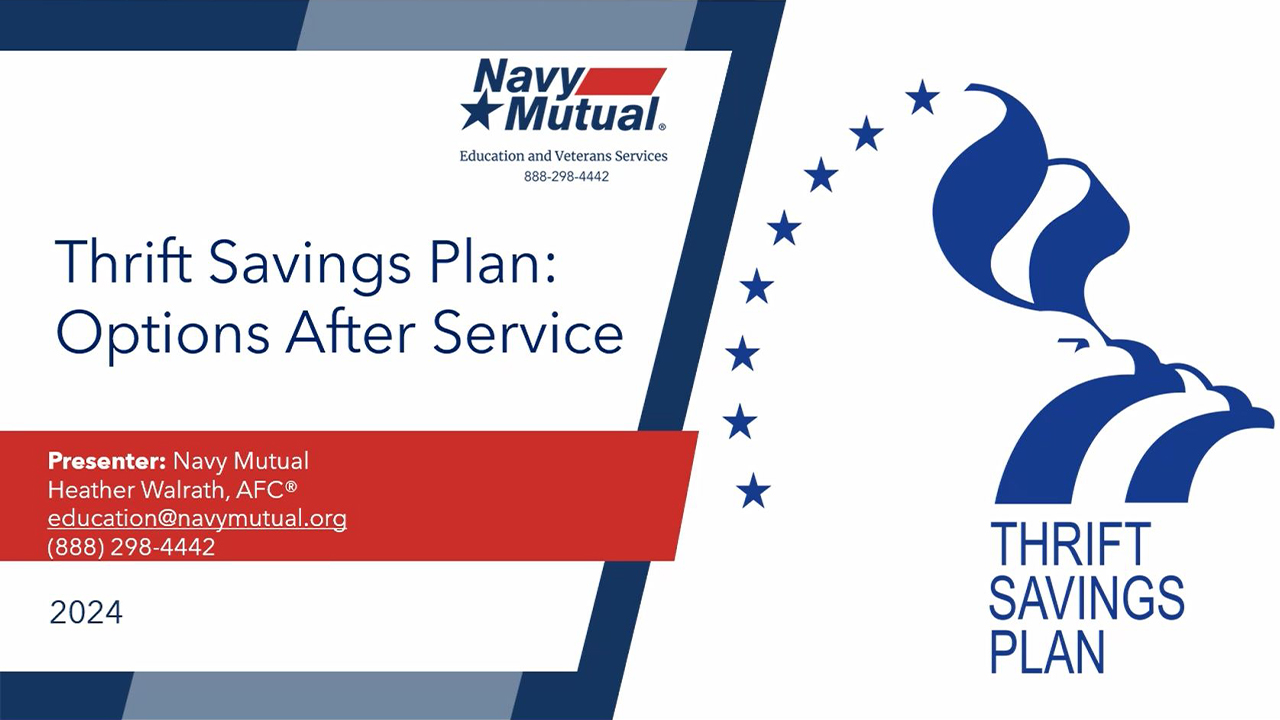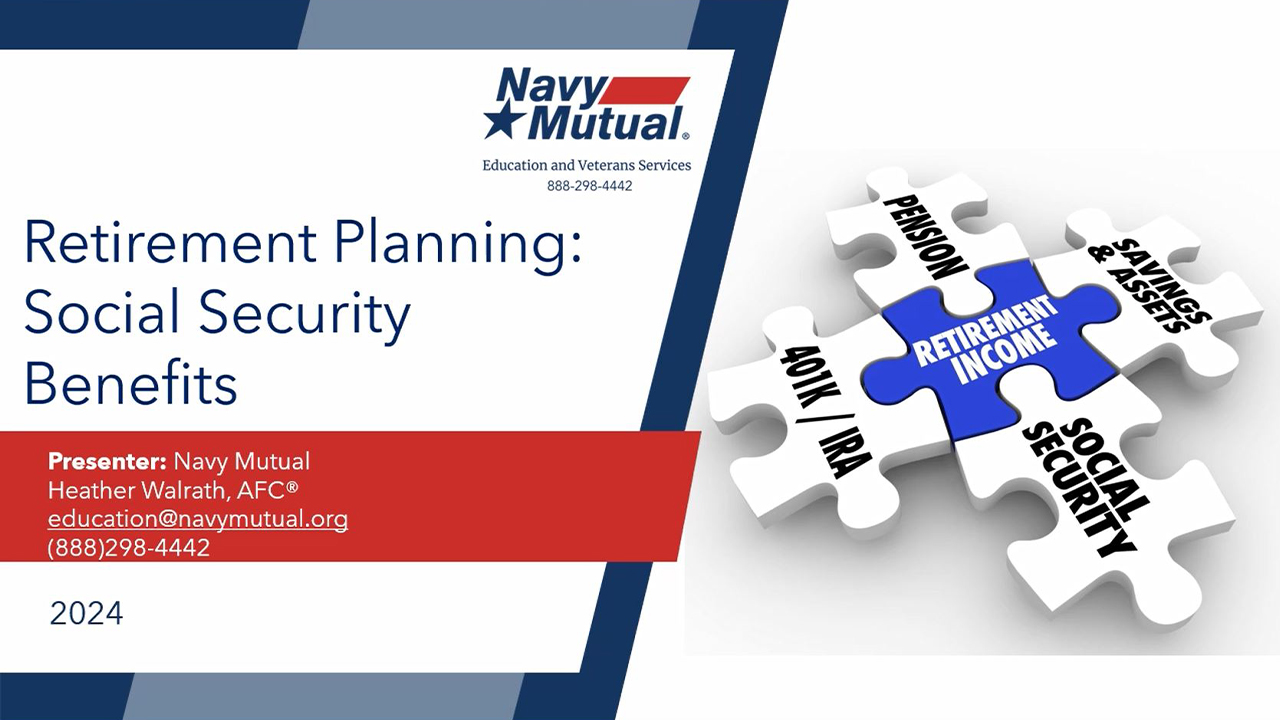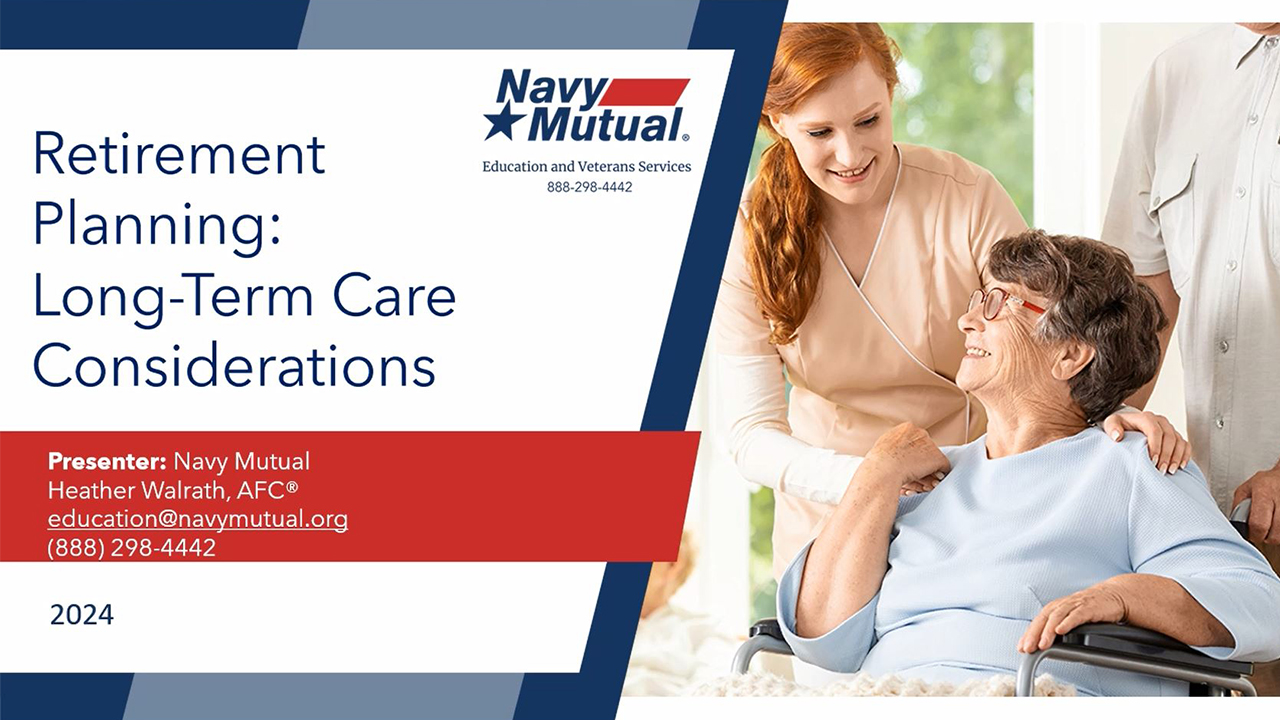Your Benefits During and After Transition
On active duty, servicemembers have many benefits available to them and their families at little to no cost. However, the automatic eligibility for Dependency and Indemnity Compensation (DIC), Survivors’ and Dependents’ Educational Assistance (DEA), and most death benefits ends once the servicemember transitions from active duty. Many decisions will need to be made regarding benefits. The Survivor Benefit Plan (SBP) and life insurance are two ways to ensure that the immediate expenses are paid and that survivors have a source of income after death. There may be other benefits depending on your service and VA disability rating.
Here are some short presentations to help you make an informed decision about your benefits. For a deeper understanding of these benefits, please contact us to set up a virtual “Chart Your Path” session.
SBP 101: What Is SBP?
This module provides a general introduction of the Survivor Benefit Plan for retiring servicemembers and provides an overview of the beneficiary options and costs of the program.
SBP 102: Comparing SBP to Life Insurance
In this module, we explore ways to determine the potential value of the Survivor Benefit Plan and compare the program to various types of life insurance. We also provide tools for evaluating the value of a servicemember’s benefit and guidance on how to utilize DOD Actuary site tools for comparison.
SBP 103: How to Make the Election
This module explains how to make your SBP election using Form DD-2656 and guides you through the important elements of the form to make sure you are correctly selecting the coverage you want.
Life Insurance Considerations at Retirement
SGLI coverage ends 120 days after separating from active duty. In this module, we provide tools to help you evaluate your current life insurance needs, explain various forms of life insurance, and explain options to convert SGLI to other insurance without any medical underwriting.
Integrating Your Survivor Benefits
There are various benefits available to survivors of servicemembers. Eligibility depends on many factors including the member’s service record, whether they die from a service-connected condition, and whether they elected to participate in certain programs upon retirement. In this module, we will navigate the requirements for survivors to receive SBP benefits, other benefits from the VA such as DEA and DIC, and Social Security survivor benefits.
TSP: Options After Service
The Thrift Savings Plan is a great, low-cost way to save for retirement. This module will discuss the options available for TSP accounts post-service.
Retirement Planning: Social Security Benefits
Understanding potential Social Security benefits is an important part of retirement planning. In this module, we will introduce you to some Social Security planning tools and help you understand how to access your benefit information.
Retirement Planning: Long-Term Care Considerations
Long-term care is often required as we age, but most health insurance programs, including Tricare and Medicare, do not pay for this type of care. This module explores some long-term care funding options to consider.
Education Home
Navy Mutual’s Education and Veterans Services team can help servicemembers, veterans, and their families with matters related to financial education, veterans services, and survivor benefits.
Contact Us
You may contact our Education and Veterans Services team by email or by calling 888-298-4442. If you have a different request, please use the form below.
Navy Mutual Aid Association’s Department of Education and Veteran Services does not endorse or favor any commercial financial product or service or promote the services of any specific financial institution. Further, Navy Mutual Aid Association and its accredited VSO Representatives do not charge or accept a fee or gratuity for representation services rendered to claimants before the Department of Veterans Affairs. 38 C.F.R. §14.628.
